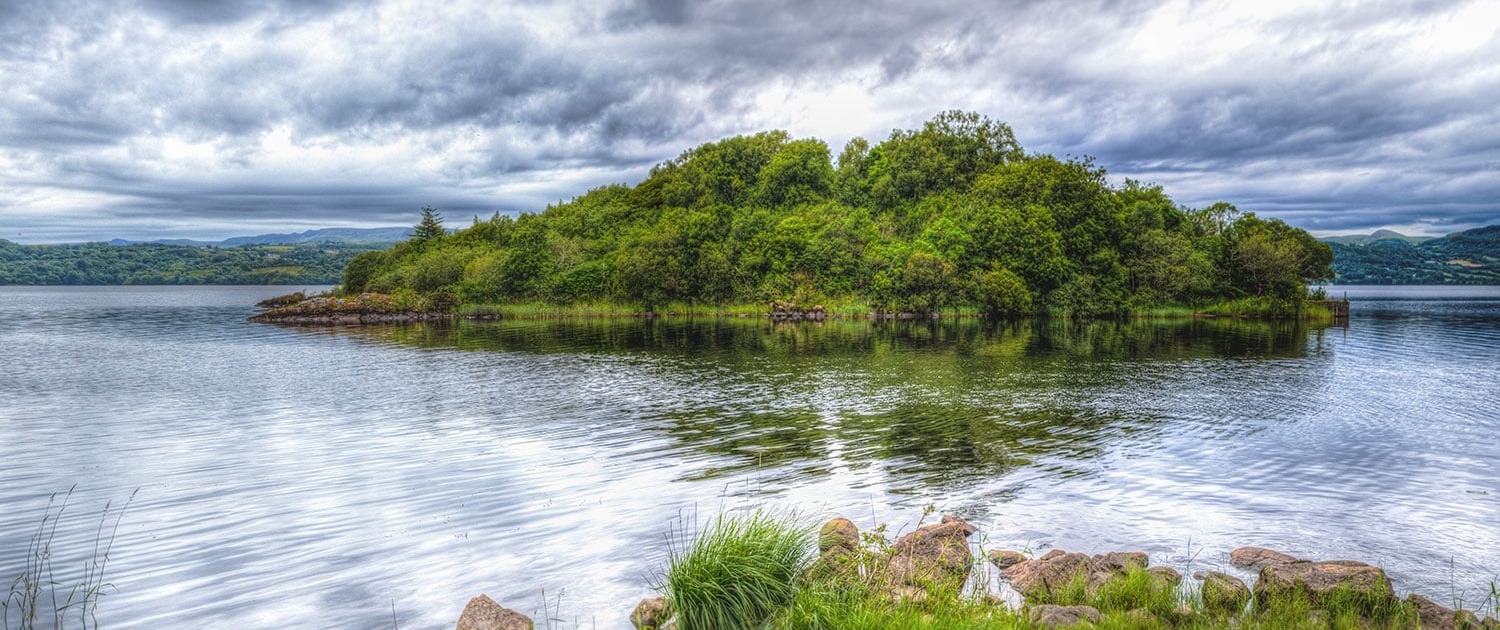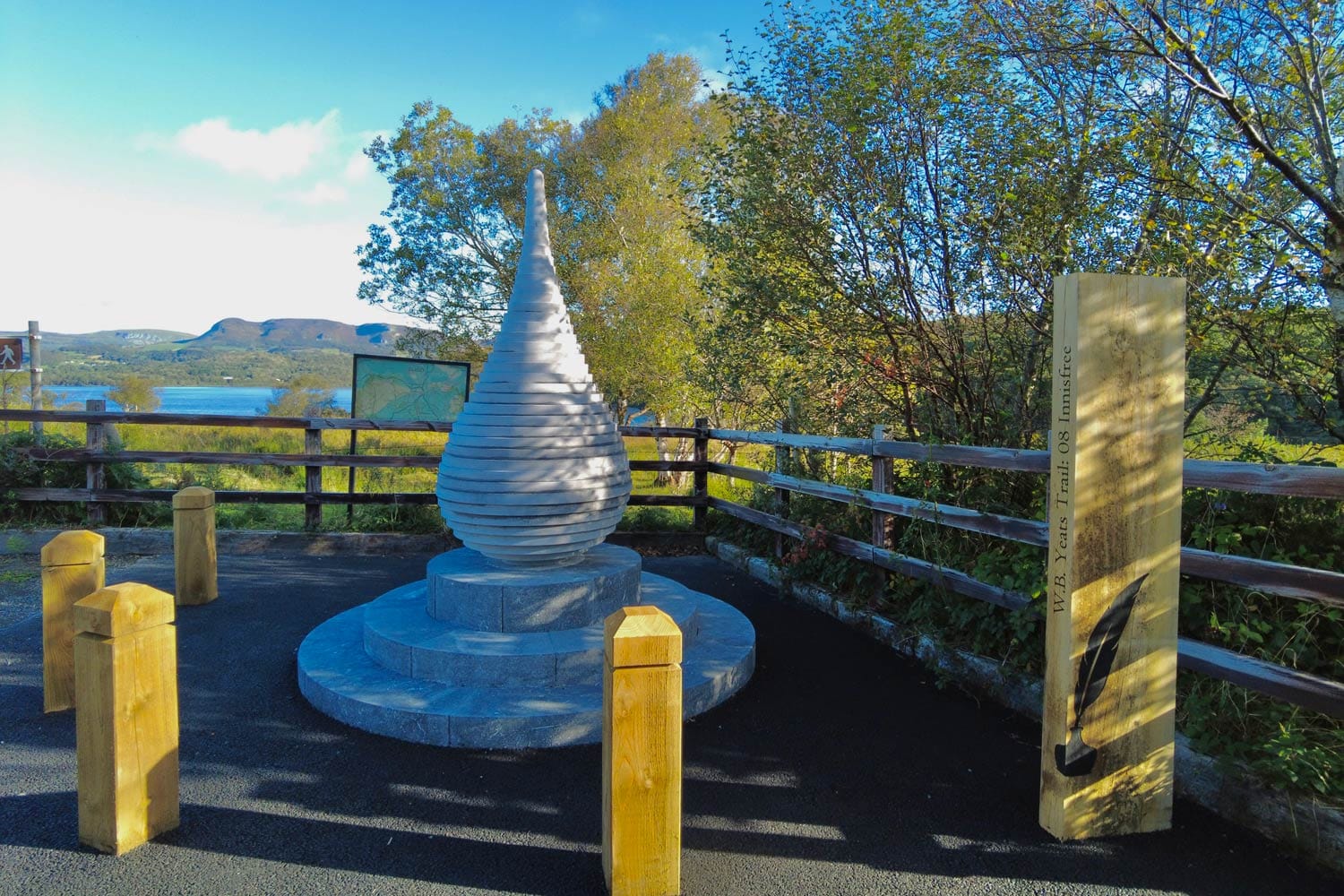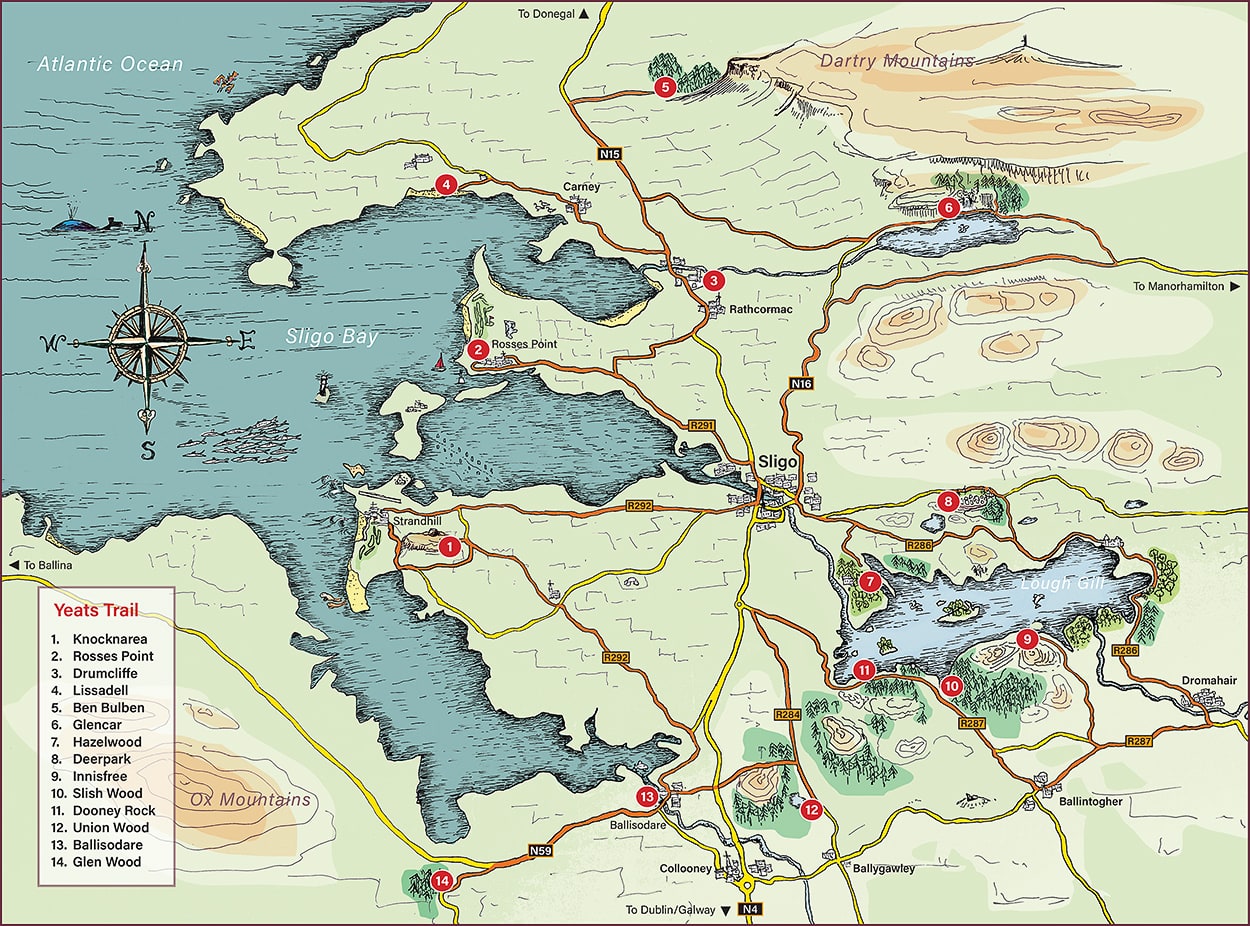The poem outlines Yeats’s need for peace and tranquillity, unsurprisingly it was the uninhabited island of Innisfree that provided the inspiration for this thought in what would become one of the most enduring and best known of his works.
A number of recordings were made by the BBC of Yeats reciting this (and other) poems in the 1930s. He tends to chant the lines in monotone, an interesting aspect of his work, in particular as the imagery itself he describes in the poem is so evocative.
from The Rose (1893)
The Lake Isle of Innisfree
I will arise and go now, and go to Innisfree,
And a small cabin build there, of clay and wattles made:
Nine bean-rows will I have there, a hive for the honey-bee,
And live alone in the bee-loud glade.
And I shall have some peace there, for peace comes dropping slow,
Dropping from the veils of the morning to where the cricket sings;
There midnight’s all a glimmer, and noon a purple glow,
And evening full of the linnet’s wings.
I will arise and go now, for always night and day
I hear lake water lapping with low sounds by the shore;
While I stand on the roadway, or on the pavements grey,
I hear it in the deep heart’s core.
Directions
Parking: Car park
Walking Trail: Yes
Longitude: 54.24407 Latitude: -8.3533819
View location on Google Map




